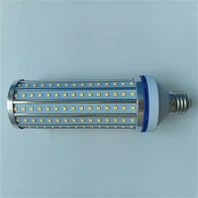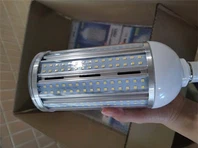Illumination Range: How Much Area Can a 100W LED Flood Light Cover?
| Table 1: Outline of the Article
Introduction to LED Flood Lights Understanding Wattage and Lumen Output Calculating Coverage Area for LED Flood Lights Factors to Consider Formula for Coverage Area Calculation The Impact of Beam Angle 100 Watt LED Flood Lights and their Coverage Area Factors Affecting the Coverage Area of 100 Watt LED Flood Lights Height of Installation Mounting Angle Ambient Light Conditions Light Distribution Pattern Example Scenarios for 100 Watt LED Flood Lights Residential Backyard Commercial Parking Lot Sports Field Choosing the Right LED Flood Light for your Needs Considerations for Different Applications Energy Efficiency and Cost Savings Maintenance and Lifespan of LED Flood Lights Environmental Benefits of LED Flood Lights Conclusion FAQ 1: Can I use a 100 watt LED flood light for indoor applications? FAQ 2: What is the average lifespan of a 100 watt LED flood light? FAQ 3: Are LED flood lights suitable for use in wet locations? |
When planning outdoor lighting for a driveway, parking lot, sports field, or backyard, a common and crucial question arises: "Is a 100W LED flood light sufficient for my space?" Understanding the coverage area is key to creating a well-lit, secure, and efficient environment.
This article breaks down the factors that determine the coverage of a 100W LED flood light, providing a clear guide to help you make an informed decision.
Beyond Watts: Understanding Lumens and Beam Angle
The first step is to move beyond the simple metric of "watts." Wattage (W) measures energy consumption, not brightness. With LED technology, the true measure of light output is Lumens (lm).
A typical 100W LED flood light produces approximately 10,000 to 14,000 lumens.
This is equivalent to the brightness of a 400-500W metal halide or high-pressure sodium light, showcasing the exceptional efficiency of LEDs.
The second critical factor is the Beam Angle. This determines how the light is spread:
Narrow Beam (e.g., 30°-60°): Creates a concentrated, spotlight effect, reaching longer distances but covering a smaller area.
Medium Beam (e.g., 60°-90°): Offers a balance between distance and spread, suitable for general area lighting.
Wide Beam (e.g., 90°-120°): Disperses light over a very broad area, ideal for lighting up wide, shallow spaces like a backyard or a building facade.
The Key Factors That Determine Coverage
There is no single answer for the coverage of a 100W LED light, as it depends on several interacting variables:
1. Mounting Height
This is the most significant factor. The higher the light is mounted, the wider the area it will cover, but the less intense the light will be at ground level due to dispersion.
Low Mount (10-15 ft / 3-4.5 m): Ideal for residential patios and small backyards. Provides intense, localized light.
Medium Mount (15-20 ft / 4.5-6 m): Common for building sides, parking lots, and larger driveways. Offers a good balance of coverage and intensity.
High Mount (20-30+ ft / 6-9+ m): Used in sports courts, industrial yards, and large commercial areas. Maximizes coverage area.
2. Desired Light Level (Illuminance)
The required brightness level, measured in lux (lumens per square meter) or foot-candles, varies by application. A security light doesn't need to be as bright as a sports field.
Low Light (50-100 lux): Suitable for general security and ambient lighting in residential areas.
Medium Light (100-200 lux): Needed for active workspaces, parking lots, and walkways.
High Light (200+ lux): Required for detailed tasks, sports fields, and retail environments.
3. Ambient Light Conditions
A dark rural area will feel brighter with the same light compared to a site with significant light pollution from nearby streets or buildings.
Practical Coverage Scenarios for a 100W LED Flood Light
Here are realistic estimates based on common applications. These assume a light output of ~12,000 lumens.
Scenario 1: Residential Backyard or Driveway
Mounting Height: 10-15 feet (3-4.5 meters)
Beam Angle: Wide (120°)
Desired Light Level: Low to Medium (50-100 lux)
Estimated Coverage Area: 400 to 800 square feet (37 to 74 square meters)
Why: At a lower height with a wide beam, the light effectively floods a broad, shallow area, perfect for social gatherings or illuminating a driveway.
Scenario 2: Commercial Parking Lot or Worksite
Mounting Height: 20-25 feet (6-7.5 meters)
Beam Angle: Medium (90°)
Desired Light Level: Medium (100-150 lux)
Estimated Coverage Area: 1,000 to 1,500 square feet (93 to 140 square meters)
Why: The increased height allows the light to spread farther. A medium beam ensures the light is not too dispersed, maintaining good intensity for safety and security across several parking spaces.
Scenario 3: Small Sports Court or Large Garden
Mounting Height: 15-20 feet (4.5-6 meters)
Beam Angle: Wide (120°)
Desired Light Level: Medium to High (150-200 lux)
Estimated Coverage Area: 800 to 1,200 square feet (74 to 110 square meters)
Why: This setup provides a strong, uniform blanket of light over a defined activity area, such as a pickleball court or a large, open garden.
Important Note: For very large areas like a full-size soccer field or a massive parking lot, a single 100W light is insufficient. Effective illumination would require multiple fixtures placed strategically to eliminate dark spots and ensure uniform coverage.
How to Choose and Position Your Flood Light
Define Your Purpose: Is it for security, ambiance, or a specific activity? This determines the required light level.
Measure Your Space: Calculate the square footage and note potential obstacles.
Determine Mounting Points: Identify where you can install the light at the appropriate height.
Select the Beam Angle:
Use Wide Beam lights for illuminating walls, facades, and wide, shallow areas.
Use Medium Beam lights for general area lighting.
Use Narrow Beam lights to highlight specific features (like a flagpole) or for long-throw applications.
Plan for Multiple Lights: For best results, especially in large or irregularly shaped areas, using several lower-wattage lights is often better than relying on one single, overpowered fixture.
Additional Benefits of LED Flood Lights
Energy Efficiency & Cost Savings: A 100W LED replaces a 400W+ traditional bulb, cutting electricity costs by over 60%.
Long Lifespan: Rated for 50,000 hours or more, they can last over a decade with typical use, drastically reducing maintenance.
Durability: Built with robust housings and high IP ratings (e.g., IP65 for dust and water resistance), they are designed to withstand harsh outdoor weather.
Environmental Friendliness: LEDs contain no mercury and have a much lower carbon footprint due to reduced energy consumption.
FAQs
Q: Can I use a 100W LED flood light indoors?
A: Yes. They are excellent for lighting large indoor spaces with high ceilings, such as warehouses, gyms, and manufacturing facilities.
Q: Are these lights dimmable?
A: Many models are dimmable, but you must check the product specifications and ensure you use a compatible LED dimmer switch.
Q: What is the difference between a flood light and a spotlight?
A: It's primarily the beam angle. Flood lights have a wide beam (90°+) for spreading light, while spotlights have a narrow beam (45° or less) for focusing light on a distant target.
Q: How high should I mount my flood light?
A: For a residential backyard, 10-15 feet is common. For driveway or parking lot security, 15-25 feet is better. Always follow the manufacturer's guidelines for safe installation.
Conclusion
A 100W LED flood light is a powerful and versatile lighting solution. Its coverage is not a fixed number but a flexible range, typically from 400 to 1,500 square feet, influenced by mounting height, beam angle, and your desired brightness. By carefully considering these factors, you can strategically select and position your LED flood lights to achieve optimal illumination, enhancing both the security and functionality of your outdoor space.






